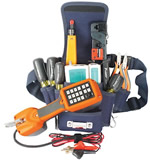
We specialize in today's leading computer-based telephony and voice-over IP systems such as solutions from Avaya, Cisco, Mitel, 3Comr, & Covad. Voice and Voice Services Planning, Consulting, Installation and Administration - Complete design services for your PBX environment with an emphasis on tight integration of voice mail, fax and your company messaging backbone. We can see your project through to a successful installation for you and your clients and can fully administer, or assist you in administering your system.Voice and Voice Services Planning, Consulting, Installation and Administration - Complete design services for your PBX environment with an emphasis on tight integration of voice mail, fax and your company messaging backbone. We can see your project through to a successful installation for you and your clients and can fully administer, or assist you in administering your system.

Services Offered:
VoIP / Computer network-based telephone system design (PBX, Voice Mail, Automated Attendant, ACD, IVR, and CTI).
VoIP / Hosted telephone system sales and installation
Telephone / PBX room planning and design, including space planning, airflow, heat/BTU analysis and power analysis.
Connectivity solutions for your voice and Internet data services at competitive pricing.
CRM and telephone systems integration solutions.
Overhead and telephone paging integration.
Technical liaison with telephone companies
Management of system installation, testing and end-user training and administrator training.

What is VoIP?
VoIP stands for Voice over Internet Protocol. As the term suggests, VoIP basically sends Voice over the Internet by recording your voice inputted by a microphone or telephone and then attaching it to an IP packet which can then travel over the Internet to its destination, much like sending a file over a network. The Voice Over IP protocol can easily be installed onto a PC and used in conjunction with a PC microphone or you can buy a VoIP enabled telephone.
How Does Voice Over IP Work?
It was discovered many years ago that sending a signal to a remote destination could also be done in a digital fashion: before sending it you have to digitalize it with an ADC (analog to digital converter), transmit it, and at the end transform it again in analog format with DAC (digital to analog converter) to use it. Voice Over IP works like that, digitalizing voice in data packets, sending them and reconverting them in voice at destination. Digital format can be better controlled: as you can compress it, route it, convert it to a new better format, and so on; also a digital signal is more noise tolerant than an analog one.
TCP/IP networks are made of IP packets containing a header (to control communication) and a payload to transport data: VoIP uses these IP Packets to travel over TCP/IP networks like the internet or networks in large office buildings.
So what are the advantages of Voice Over IP?
Because VoIP is digital, it may offer features and services that are not available with a traditional phone. If you have a broadband internet connection, you need not maintain and pay the additional cost for a line just to make telephone calls. With many Voice Over IP plans you can talk for as long as you want with any person in the world (the requirement is that the other person has an Internet connection). You can also talk with many people at the same time without any additional cost.
How Can I Place a Voice Over IP Call?
Depending on the service, one way to place a VoIP call is to pick up your phone and dial the number, using an adaptor that connects to your existing high-speed Internet connection. The call goes through your local telephone company to a Voice Over IP provider. The phone call goes over the Internet to the called party's local telephone company for the completion of the call. Another way is to utilize a microphone headset plugged into your computer. The number is placed using the keyboard and is routed through your cable modem.
What Kind of Equipment Do I Need To Make a Voice Over IP Call?
A broadband (high speed Internet) connection is required. This can be through a cable modem, or high speed services such as DSL or a local area network. You can hook up an inexpensive microphone to your computer and send your voice through a cable modem or connect a phone directly to a telephone adaptor
|










